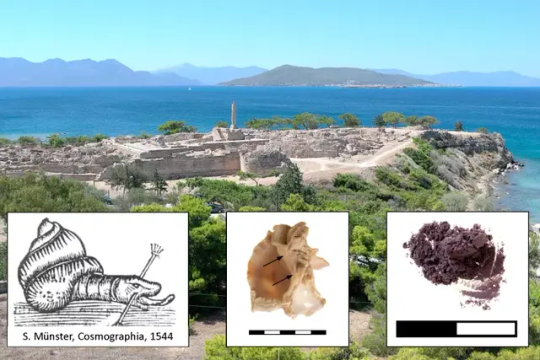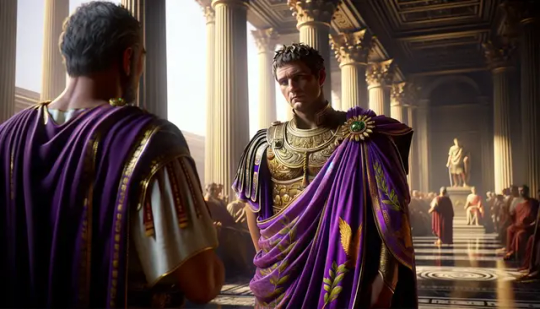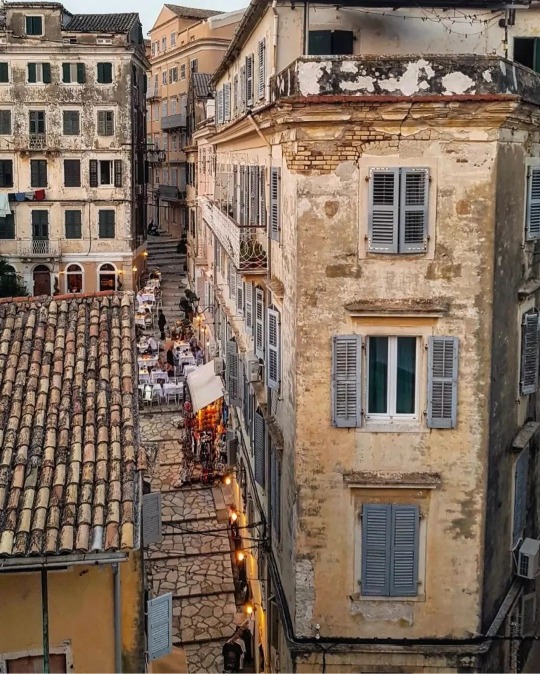#Greek Towns
Text
youtube
#history#Greece#Ancient#Ancient Greece#Greek Town#Greek City#Greek Cities#Greek Towns#Agora#Bouletrerium#Gym#Gymnasium#Athens#Miletos#Notion#Hippodamus#Metroon#Tholos#Pnyx#Ecclesia#Hippodrome#Stadium#Ceramic#Parthenon#Bouleterium#Necropolis#Palaestra#Urban#Street#Road
0 notes
Photo

Assos, Cephalonia island, Greece by martynkli on Instagram.
#greece#europe#travel#photography#landscape#seascape#beach#townscape#town#assos#cephalonia#kefalonia#ionian islands#heptanese#greek islands
221 notes
·
View notes
Text

Paraportiani II - John Miller
British , 1931-2002
Oil on canvas , 61 x 51 cm.
#John Miller#british artist#greek islands#Mykonos#greek church#Panagia Paraportiani#town church#Chora
258 notes
·
View notes
Text
for Odysseus’ name to become synonymous with journey; Odyssey- he has lost his humanity; even after he dies and his body burnt to ashes on a pyre he won’t enter Hades. he will be damned to a thousand more journeys, a thousand more trials and a thousand more deaths. his spirit floats through the plays that recite his journey, echoes through the songs sung about him, his pain seeks through every epithet. Sacker of cities. Great glory of the Achaeans. Mastermind of war. Master mariner. Man of pain.
he will be damned time and time again to suffer and reach home for it to be torn out of his grasp each time. he will reach where the river styx fades into Hades and see the descent and before he can feel relief he is back where he started. He is in Troy. He is in a boat in an unfamiliar land, but it has his name. He is in Troy again, but not the same one he raided and burnt. he is floating through the aether. he is not a man anymore. nor is he monster. he is a Thing, an Ideal; akin more to Thanatos or Hypnos or Eris in he is no longer Odysseus he is the personification of journey.
If there truly are three deaths; one of the mind, one of the heart, and one of the memory. then Odysseus has become immortal and yet he begs for death. he no longer knows whether he begs for the peace of Hades or to truly be forgotten, to truly cease to be
#greek mythology#greek myth#odysseus#the odyssey#yes this is about the moon thing#this feels like a mischaracterization but#idk#this isnt accurate to greek myth#the line about troy but not the same troy#that’s a reference to how i think there’s a few towns around the US at least named Troy#one’s in Virginia
186 notes
·
View notes
Text
one of the good changes from episode one is the way the lead-up to their flight to camp is used also as a way to explore what grover's been through, how terrified he is of 'screwing up' a mission again, how much he kind of hates his job. because he befriends these kids, he's really just a kid himself, still, and then he has to lie to them and push them away for the mission as a whole, and aryan sells how much he just hates it. how convinced he is that getting only one of and not both of the people whose safety he's entrusted with to camp IS 'failure' and not 'as much success as could be expected, under the circumstances'. he's got this anxiety that stems from feeling older than and having more responsibility expected of him than the children he meets, befriends, and guides to camp, but he's not really older, not emotionally, not in terms of anything except raw years, which doesn't really mean as much as he thinks it does when, for instance, he was also seven for twice as long as a human boy. but he's surrounded by not just humans, but human hybrids who die super young, so that is the time scale he thinks on, and he DOES feel older and he does feel a responsibility! in the book he's basically out of the picture for this sequence, so i really enjoyed getting to see some stuff geared towards his past and his goals and his issues . hi sweetheart i always loved you and you're going to find a god who's spent thousands of years hiding from everyone but you, because you care about him more than anyone else ever, ever has, and when he dies you're gonna put what's left of his soul in your heart and i love you so much
#like mister kind of always about to cry and everyone can tell. did you know you're the only person your god wants to talk to#do you even know that yet#like his anxiety is always about his duty of care. towards his friends towards his community towards his faith#and he never feels like he can measure up because he's not a tough guy or a wily guy. he's just DEEPLY resoundingly nurturing#and he lives in adhd greek warrior town where everyone is FAST and BRAWWW so he thinks this is the wrong thing to be#and then he gets anxiety about his anxiety#etc. can you tell i always really related a lot to him#pjo
154 notes
·
View notes
Text
A doctor rushing to a small town on horseback, praying diligently to Hermes for safe and speedy travel so that they may make it before the patient is too sick to help. Hermes hearing this - and curious by it. People often ask for safety from thieves. Thieves ask for luck amongst the roads, potential targets to snag and steal. Merchants request shortcuts so they may sell their wares quicker. Rarely does he ever hear prayers for safety, for speed, for luck so that someone may help another.
So he follows silently, a little sparrow soaring above. Slips down from the air to the ground, as tiny as a mouse, and darts rapidly behind running boots. Watches from the corner of a room as a child weakly breathes and a doctor patiently attends to them.
It's interesting to him, the care. He's not yet seen it much in travelers - seen it in families, of course, in friends. But never in strangers. People are wary of those they meet on roads. Strangers on hidden paths, far away from helpful eyes and warrior swords, prickle with potential danger.
And yet...
It's interesting to watch the colour rise back to a pale face, cheeks flushed, lungs drained of fluid and now breathing clearer. A medicinal paste is rubbed into a lanced wound. Clear words, clear instructions.
The doctor stays for a few more days, attending to small ailments, checking in on the child. And then they're off to the next town, praying for safety and speed so they may help those who need it before it's too late.
He follows. He watches. He learns.
It fascinates him. Healing, helping. Traveling roads endlessly to take care of others. Even at cost, it's baffling. The effort, the drive - how do they manage it? Aren't they tired?
All travelers settle down eventually. Nomadic lifestyles run thin as age impacts movement. Energy. And yet on and on this doctor roams. And others soon follow.
Please, Lord Hermes, they whisper into rushing wind, please let me make it in time. Before someone falls prey to Death's cold scythe. I just want to help.
Okay, he whispers back, inaudible to their ears but not to their growing spirit. Run, my child. You will make it. You will help.
#was thinking about how the cadauceus is the symbol of medicine when it should be the rod of Asclepius#but also my belief that since doctors often traveled from town to town they were under hermes's guidance just as traveling merchants were#and travel is still normal for medicine!! traveling nurses are still a thing you know#and doctors who go overseas to perform medicial procedures in impoverished places that dont have access to that kinda care#happy talks greek mythos#hermes#he's curious and he follows and he learns
244 notes
·
View notes
Text
Round three


Sportacus is one of the main characters from Lazy Town, he's athletic and he often teaches the young kids how to be healthy and have fun outside while they touch some grass instead of playing video games. He's not greek but rather dubbed, though he plays an important role to our childhood
Socrates is a philosopher from Athens who is credited as the founder of Western philosophy and among the first moral philosophers of the ethical tradition of thought
OG POST
#greek sexyman#greek sexyman of tumblr#gsot#Sportacus#Socrates#lazy town#philosophy#Sportacus vs Socrates
156 notes
·
View notes
Text
everyone is posting "hatsune miku if she was from [artist's country]" so this is miku if she was from my homeland of west-central florida

#hatsune miku#miku hatsune#the town in the photo is technically#tarpon springs#they have a very large greek diaspora community there#women want me fish fear me
22 notes
·
View notes
Text







Lamezia Terme, Calabria, Italy
Lamezia Terme is located on the eastern border of the coastal plain commonly called Piana di Sant'Eufemia, which was created by drying a wide marshy area. It is the third largest city in Calabria by number of inhabitants and has a relatively recent history.
Established in 1968 from the fusion of three pre-existing towns: Nicastro, Sambiase, and Sant'Eufemia Lamezia, it is not only an important regional and national hub due to its strategic location in the centre of the region, but also a crucial business hub for the region's economy. These three towns have contributed to the city's diverse cultural heritage and historical significance.
Lamezia Terme is most famous for its international airport which is situated a few kilometres outside the town.
The Baths of Charon

Despite its modern origins, the name is much older: it derives from the first political community attested on this territory, the Lametìnoi, dating back to protohistoric times.
The Baths, on the other hand, refers to one of the main resources of the area, the Terme di Caronte, known since Roman times as Aque Angae. These four springs are located on the slopes of the Reventino mountain massif and, combined with the current of the Bagni river, give rise to different degrees of temperature: the highest reaches 39°C, hence the name Charon.

The secrets of ancient Terina
The first human settlements in what is now modern Lamezia Terme were discovered in 1865, when jewellery was found in the area of Sant'Eufemia Vetere, which was later sold to the British Museum in London, which still preserves it today.
This discovery, known as the Treasure of St Euphemia, was the first in a long series, which during the 20th century confirmed the ancient settlement of Terina. It was not until 1997, however, that it was decided to initiate a systematic search that identified a well-structured urban layout, of which we now know a living quarter built with parallel axes that define a regular urban grid. According to the most widely accepted hypothesis, this would be the extension of a pre-existing structure dating back to the 5th century BC.
Two rooms of the Lametino Archaeological Museum are dedicated to ancient Terina. Lametino Archaeological Museum housed in the Monumental Complex of San Domenico. Divided into three sections: Prehistoric, Classical and Medieval, will give you an insight into the history of this area, from the earliest times. There is, for instance, a hydria, which is a vase, dated between 380 and 370 BC, as well as everyday objects.

The ruins of the medieval castle
There is still much to discover in Lamezia Terme, especially in the historic city centre. On Hill of San Teodoro, stands the Norman castle of Nicastro about whose origins there is some dispute. Built on the hillside, a unique strategic position to control the surrounding plain all the way to the sea, according to some dates back to Byzantine era, according to others Svevo-Normana.
All that remains of the original structure are four towers, the ramparts, walls and a buttress with a small loggia; the earthquake of 1638 caused great damage to the structure, but at the same time contributed to the legends that populate it.
Photos by Pino Elia
Follow us on Instagram, @calabria_mediterranea
#lamezia terme#calabria#italy#italia#south italy#southern italy#mediterranean#italian#mediterranean sea#seascape#sea#europe#landscape#italian landscape#buildings#cityscape#city#town#architecture#building#people#flowers#lamezia#lameziaterme#history#greek#magna graecia#magna grecia#baths#greek art
34 notes
·
View notes
Text

In This Ancient Workshop, Greeks Crushed Snail Glands to Make the Purple Dye Worn by Royalty
Archaeologists discovered remnants of a 3,600-year-Old Dye factory on an island in Greece.
On an island in Greece, researchers have discovered a 3,600-year-old workshop that once turned out a rare purple dye coveted by royalty—and made from snail glands.
Archaeologists were excavating recently in the Bronze Age town of Kolonna, on the Greek island of Aegina, when they discovered two Mycenaean buildings. As the researchers write in a study published in the journal PLOS ONE, the buildings date to the 16th century B.C.E., and the older one contained pigmented ceramics, grinding tools and heaps of broken mollusk shells: all indicative of a purple dye factory.



In this workshop, ancient Greeks produced the vibrant pigment known as Mycenaean purple—or, as the Romans called it, Tyrian purple. First manufactured by the Phoenicians in present-day Lebanon, the dye was extracted from the mucus of the Mediterranean’s carnivorous sea snails. Across the region, only the rich owned anything dyed Mycenaean purple, as the color’s production was painstaking.
As Roman historian Pliny the Elder once wrote, thousands of snails were required to produce a single ounce of purple dye. Its creators had to crush snails’ shells, extract their tiny glands, mix them with salt water and let the concoction steep in the sun, per the study. The result was a “deep purple, lilac or dark red color,” which was used on textiles and paintings, study co-author Lydia Berger, an archaeologist at the University of Salzburg, tells Popular Science’s Laura Baisas.
The fragments of pottery the researchers found on the site were probably containers for dye. As Berger notes, the pottery’s pigments are so high-quality that they could still be extracted and used to dye clothing today. The site also contained stones used for grinding, a waste pit and piles of crushed snail shells.
Eventually, snail purple would become the color of royalty. In the first century C.E., Roman Emperor Julius Caesar named Tyrian purple his official color and inspired successive emperors to don the same hue. But back in the 1500s B.C.E., the color was just beginning to be produced.


At the time, Kolonna was a dense, fortified small town, says Berger, whose inhabitants produced and traded lots of different handcrafted products and raw materials like Mycenaean dye, which wasn’t yet exclusive. Though the dye factory is in an urban area—an oddity among dye workshops—its coastal location is ideal for purple production. As the researchers write, snails had to be caught and kept alive until their glands were harvested.
By analyzing the shells in this particular workshop, researchers concluded that just one snail species was used there: the banded dye-murex. Interestingly, it wasn’t the only animal killed at the site. As Newsweek’s Aristos Georgiou writes, archaeologists also found the burnt bones of several piglets and lambs. Researchers suggest these young mammals were sacrificed in the workshop as part of a ritual, meant to somehow bless the dye’s production.
As they write in the study, the ancient site not only proves that purple dye was manufactured in cities, but also provides “new insights into the technological and possibly spiritual background of the process.”
By Sonja Anderson.



#Archaeologists Discovered Remnants of a 3600-Year-Old Purple Dye factory in Greece#Bronze Age town of Kolonna#Greek island of Aegina#purple#Mycenaean purple#Tyrian purple#ancient artifacts#archeology#archeolgst#history#history news#ancient history#ancient culture#ancient civilizations#ancient greece#greek history
22 notes
·
View notes
Text
can you imagine if richard papen had just gone to like. ucla
#as a californian from a town very similar to his: it’s so fucking funny to hear him talk about how much he hates california#he’s like if i had grown up in this east coast victorian lake house i would have loved it bc ca sucked out my soul#ok melodramatic#i don’t have any rich friends a creepy greek professor!! i’m stuck in CA forever!!#the secret history#donna tartt#(also note: i’m like 20% of the way in LOL don’t spoil anything please 🙏)
69 notes
·
View notes
Photo

Corfu island, Old Town - Greece
IG: xrysa_mou
#corfu#greece#greek aesthetic#travel destinations#architecture#travel#wanderlust#hellas#travel greece#unesco#greek islands#greek island#narrow street#city#cityscape#old town
179 notes
·
View notes
Photo

Symi island / Greece. Photo by Giannis Zarzonis.
190 notes
·
View notes
Text
“Come home with me”
Lola Tung and Jordan fisher as Orpheus and Eurydice in “Hadestown”

#hadestown#jordan fisher#lola tung#hades town#fanart#musicals#musical#Jordan fisher hadestown#orpheus#eurydice#orpheus and eurydice#greek mythology#anais mitchell#digital art#procreate#theatre#musical theatre#theatre kid#theater#theater kid#musical theater#Lola tung hadestown
32 notes
·
View notes
Text
i need to go to the tinariwen concert so bad but its in athens fuck my stupid baka life why is everything never where i ammmmm
#ofc no band would come to a random greek small town i told u bts isnt coming to fuckass oklahoma!!!!!!!#m
11 notes
·
View notes
Text
I want a dionysus design where he's some otherwordly beast, like some really big, dark, horned, ivy-infested Something that's dripping what looks to be wine but could also be blood and as he's moving through the bushes he looks sometimes like a bull and sometimes like a leopard and when he turns to look at you he has a human face, but he is wearing it like a fleshy mask.
#dionysus#ancient greek mythology#horror dionysus best dionysus#the bacchae is a bit like a horror story if you see it from pentheus' perspective#crazy guy comes to town#drives all the women crazy#really wierd stuff keep happening#and pentheus is trying to keep it all in order but he slowly goes insane himself until he's torn apart by his mother and other women#and then his mother walks into the town covered in blood and happily showing off her son's severed head
153 notes
·
View notes